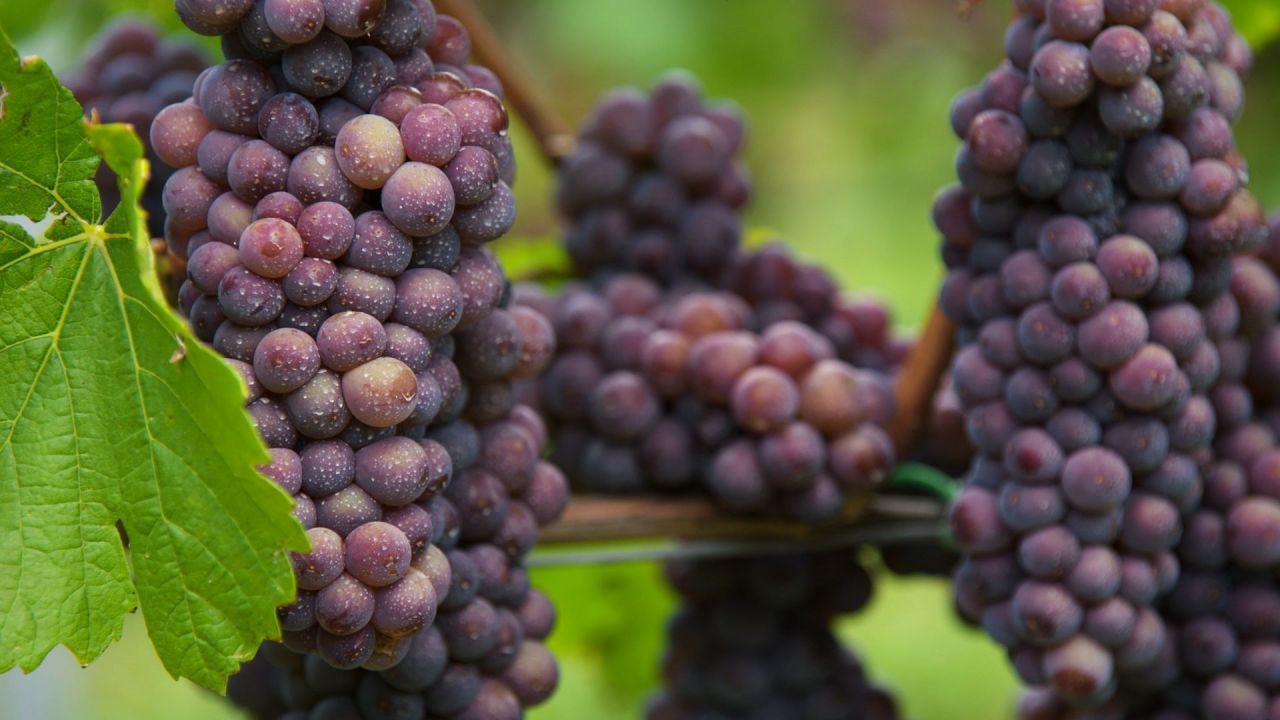
Pinot Gris
Pinot Gris has been known since the Middle Ages in Burgundy, where it was probably called Fromentau. Nowadays is quite popular across the globe and it goes by quite a few different name such as: Pinot Grigio, Grauburgunder, Rulander or Tokay d'Alsace.
It spread from Burgundy, along with Pinot Noir, arriving in Switzerland and Hungary by 1300 and Italy by 1900. Until the 18th and 19th centuries, the grape was a popular planting in Burgundy and Champagne, but poor yields and unreliable crops caused the grape to fall out of favor in those areas. It found its way to Alsace around 1800 and became a staple, producing the Tokay dÁlsace, a highly regarded wine.
Pinot Gris has a remarkably similar profile to Pinot Noir and that the color difference is due to a genetic mutation. The leaves and the vines of both grapes are so similar that the coloration is the only aspect that differentiates the two.
Nowadays we may find plantings from Australia to the USA, but still the most typical samples are found in Alsace, with Alto Adige and Friuli in Italy promoting a more crisp ready for consumption version. Alsatian Pinot Gris are medium to full-bodied wines with a rich, somewhat floral bouquet. They tend to be spicier than other counterparts and can age well. German Pinot Gris are more full-bodied with a balance of acidity and slight sweetness. Oregon produces medium bodied yellow to copper-pink colored wines with aromas of pear, apple, and/or melon. In California, its light bodied with a crisp, refreshing taste with some pepper and arugula notes. Italy produces a light-bodied, often lean wine that is light in color with sometimes spritzy flavors that can be crisp and acidic.
Its delicate nature pairs it mostly with light salads, fruit or white fish and it is usually found as a varietal wine.
C.F.
It spread from Burgundy, along with Pinot Noir, arriving in Switzerland and Hungary by 1300 and Italy by 1900. Until the 18th and 19th centuries, the grape was a popular planting in Burgundy and Champagne, but poor yields and unreliable crops caused the grape to fall out of favor in those areas. It found its way to Alsace around 1800 and became a staple, producing the Tokay dÁlsace, a highly regarded wine.
Pinot Gris has a remarkably similar profile to Pinot Noir and that the color difference is due to a genetic mutation. The leaves and the vines of both grapes are so similar that the coloration is the only aspect that differentiates the two.
Nowadays we may find plantings from Australia to the USA, but still the most typical samples are found in Alsace, with Alto Adige and Friuli in Italy promoting a more crisp ready for consumption version. Alsatian Pinot Gris are medium to full-bodied wines with a rich, somewhat floral bouquet. They tend to be spicier than other counterparts and can age well. German Pinot Gris are more full-bodied with a balance of acidity and slight sweetness. Oregon produces medium bodied yellow to copper-pink colored wines with aromas of pear, apple, and/or melon. In California, its light bodied with a crisp, refreshing taste with some pepper and arugula notes. Italy produces a light-bodied, often lean wine that is light in color with sometimes spritzy flavors that can be crisp and acidic.
Its delicate nature pairs it mostly with light salads, fruit or white fish and it is usually found as a varietal wine.
C.F.

